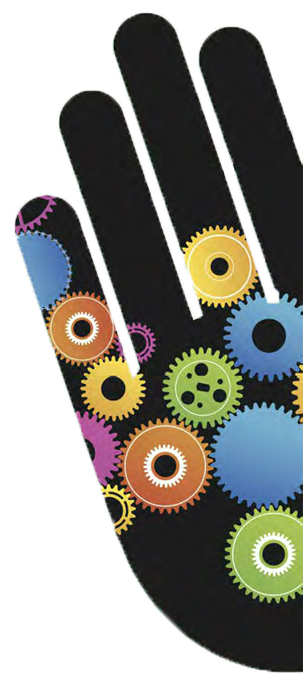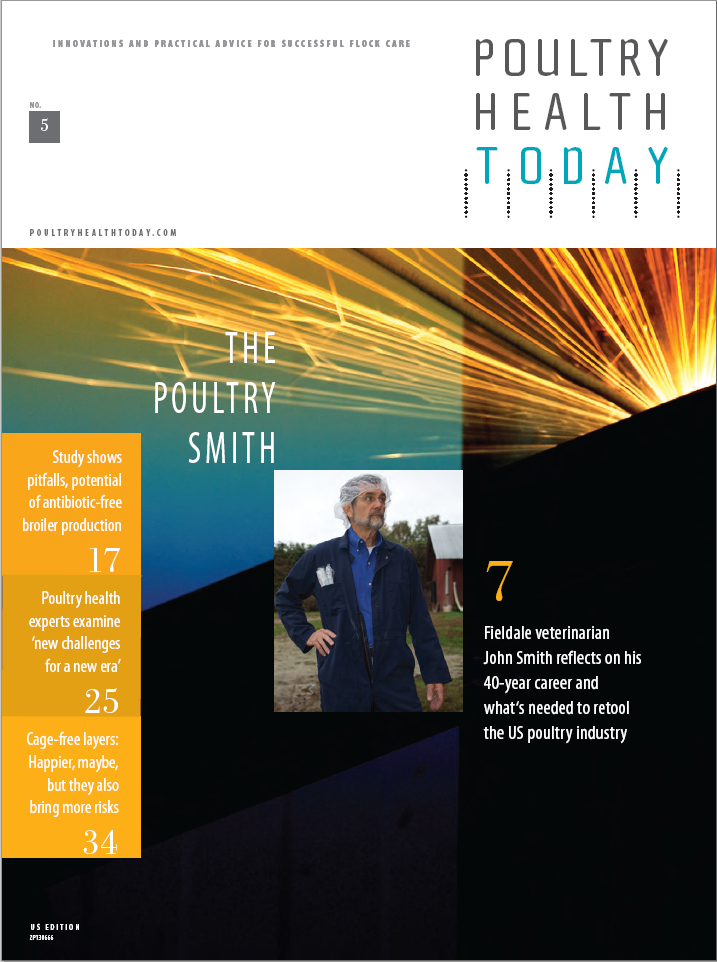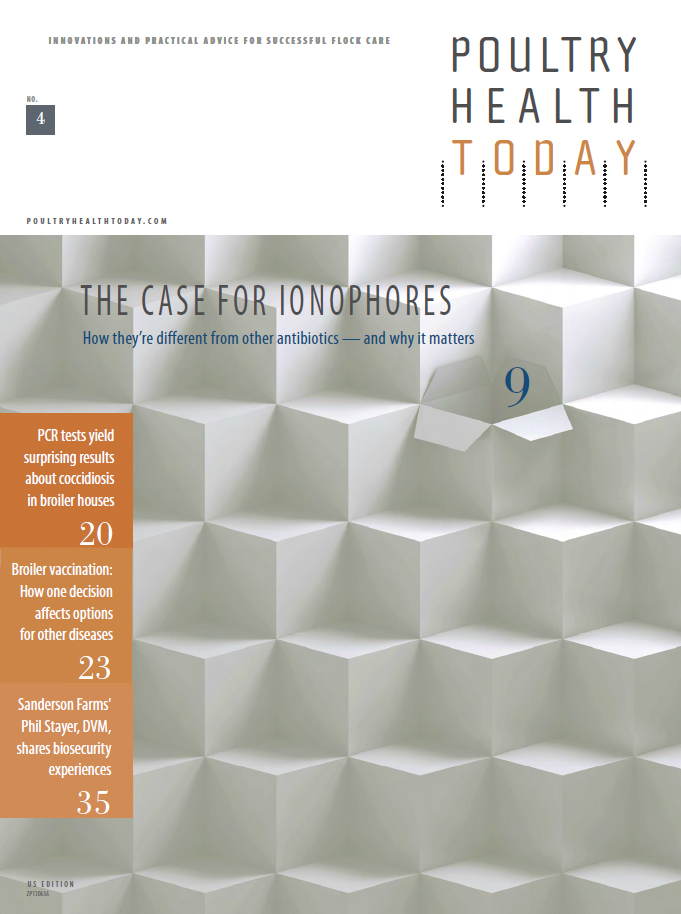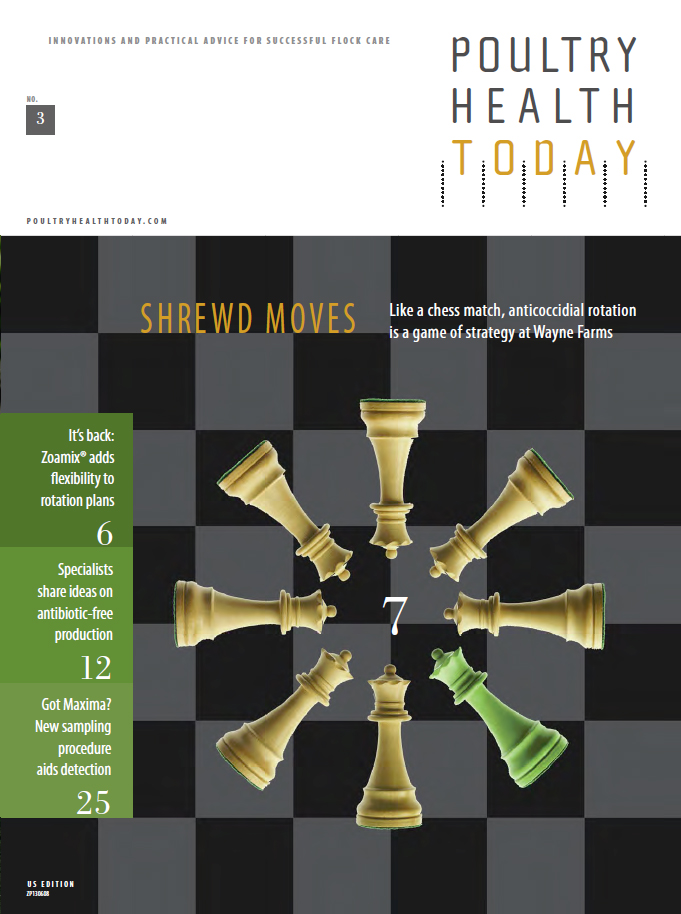

Putting sustainability into action today

So how can commercial poultry producers make their poultry-health programs more sustainable — ethically, environmentally and economically? Poultry Health Today asked specialists to comment on five key aspects of production:
1. Genetics
Genetics affect sustainability because they influence not only the efficiency of a bird's growth but also its overall health and welfare.
Today, most conventional poultry is bred to grow bigger and faster than ever, but some claim that such rapid and robust growth compromises mobility and immunity. However, John Halley, PhD, global head of nutrition services at Aviagen, says today's producers don't have to choose between growth and health — in fact, he says, modern breeding programs improve health, environmental impact, welfare and production characteristics. Producers just have to know how to care for these high-performance birds.
"Modern breeders and broilers have more capacities than they used to, so they need management and nutrition adapted to reach their potential. The older lines were more forgiving if you didn't get everything exactly right, whereas modern lines are much higher performing but also higher maintenance," Halley says.
To enable modern, high-performance birds to reach their genetic potential, Halley advises producers not only to carefully follow the breeder's instructions but also to regularly assure quality and compliance at every step along the way. "Ultimately, poultry health is an integrated system, and all parts need to be working for the bird to be healthy."
2. Nutrition

Like genetics, nutrition is a precise science that significantly impacts poultry health and growth. Given the relatively short life cycle of broilers, it is critical that birds get exactly the nutrition they need at exactly the right time — an increasingly elusive goal, given the increasing fluctuations in grain quality.
For example, producers now have to regularly tweak rations to accommodate inconsistencies of a major feed ingredient — one that could easily serve as agriculture's dubious poster child for sustainability: dried distillers' grains with solubles (DDGS) from ethanol production.
While DDGS are often plentiful and typically make up 10% or more of a bird's diet, their levels of protein, amino acids, available energy, phosphorus and sodium can vary widely from load to load. For this and other reasons, producers need to make sure that the ingredients in the feed actually match the ones on the label.
"Because of the huge volumes of feed we go through, it's easy to lose sight of what we're doing," Aviagen's Halley says. "Producers need to pay close attention to incoming ingredients to make sure they're making the feed they think they're making. They should also ensure that feed is stored and administered properly."
In addition, he says, the industry should continue exploring alternative feed sources to help offset grain's high prices and controversial carbon footprint. For the time being when other sources can only replace a small percentage of feed, though, producers should focus on improving feed conversion and limiting waste.
3. Husbandry
"As we always say, good husbandry is good for the animal," says Steven Clark, DVM, senior technical services veterinarian at Zoetis Inc. "And what's good for the animal is good for people, the environment and the producer's bottom line."
According to Clark, who each year visits dozens of broiler and turkey operations throughout the country, the industry has made great strides with husbandry over the last few decades by embracing technological advances, such as nipple drinkers, power ventilation and in ovo injection systems for vaccines.
"The switch from bell-style drinkers to nipple drinker lines has improved litter conditions, which in turn has improved air quality, and consequently bird performance and health," he says. "Power ventilation ensures birds get plenty of fresh air, while pushing ammonia and other contaminants out. And automated injection systems allow every egg to be vaccinated against Marek's disease or even coccidiosis."
Clark commends producers for investing in these new technologies and encourages them to continue doing so. However, he says, no technology can replace good management on the road to sustainability.
"With all this technology, it's easy to fall into a routine, but it's important to be watchful over the birds and be prepared to make adjustments as necessary," he says.
To do this effectively, Clark urges producers to ensure proper documentation and training for all staff, through both internal programs and external audits.
"Just as producers have embraced changes in birds and equipment, they also need to be open to changes in management," he says. "They should, therefore, take full advantage of the skills and expertise of their suppliers — we love to teach, educate and help our customers identify new opportunities."

4. Disease Management
Disease management is perhaps the one area of poultry production where producers have had lots of practice being sustainable, particularly in the management of antimicrobials (antibiotics and synthetic therapeutics).
Like those used in human medicine, many therapeutics for poultry may lose effectiveness if they are used too long or not at the correct dose rate. Between that and a drought of new compounds, producers quickly learned to preserve and make judicious use of the tools they had. (See related articles, pages 23 and 25.)
For example, Clark says, the long-standing practice of rotating anticoccidials helped the industry maintain reasonably good control of coccidiosis for many decades while keeping its aging arsenal of products effective.
"Now, sustainability-minded producers are taking that a step further and planning their coccidiosis-management programs up to 2 years in advance," he says. "They are also using coccidiosis vaccines to rest medications. To me, that's more than being sustainable. It's also being smart."
"From the CEO to middle management to the plant and barn workers, every person must be familiar with, and conversant in, animal welfare … animal welfare, like sustainability, doesn't happen by accident – It takes constant and concerted effort by every member of the organization." Stephen Shepard, FACTA
5. Animal Welfare
Strong animal-welfare programs not only protect animals and appeal to consumers but they are also associated with better-quality products and increased productivity, says Stephen Shepard, a poultry specialist at FACTA.
To reap all the benefits of high animal-welfare standards, Shepard recommends implementing strong programs that emphasize education.
"The problem is that some retailers don't understand the daily challenges faced by producers, or what it takes to produce your products," Shepard says. "Education is extremely important and producers are the experts."
Furthermore, Shepard says, it's especially important to regularly train and educate employees who handle flocks every day.
In addition to education, Shepard says effective animal-welfare programs should include clearly defined goals and metrics; comprehensive documentation and standard operating procedures; independent, third-party audits; and regular science-based assessments of production practices.
But above all, Shepard says, successful animal-welfare programs take commitment.
"From the CEO to middle management to the plant and barn workers, every person must be familiar with, and conversant in, animal welfare," he stresses. "Animal welfare, like sustainability, doesn't happen by accident — it takes constant and concerted effort by every member of the organization."
More Issues












